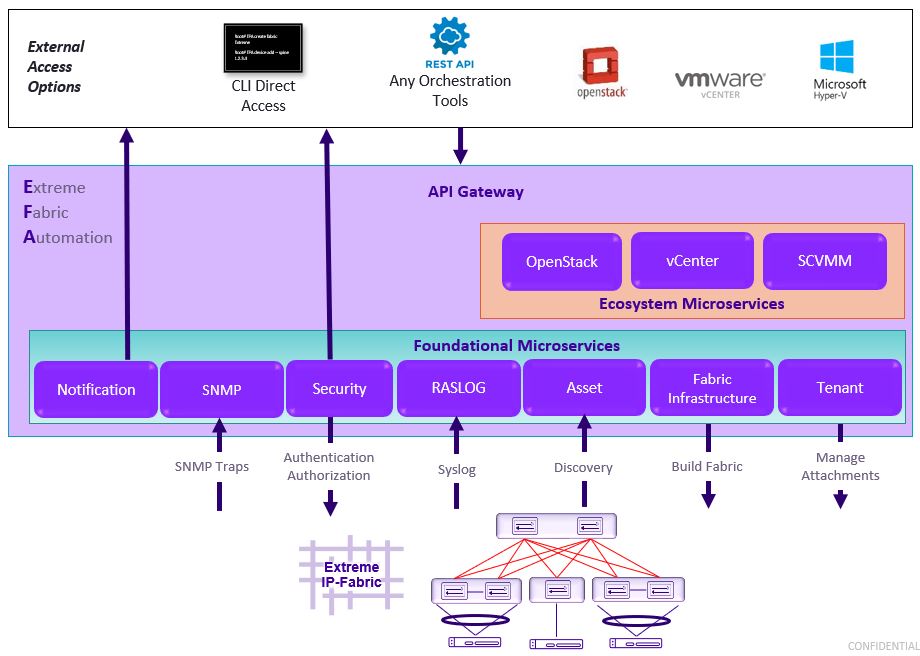Introduction to Extreme Fabric Automation
Extreme Fabric Automation (EFA) is a micro-services-based scalable fabric automation application.
- Building and managing small data center (non-Clos) fabrics and 3-stage and 5-stage IP Clos fabrics
- Managing tenant-aware Layer 2 and Layer 3 networks
- Integrating Virtual Management ecosystem platforms, such as VMWare vCenter, OpenStack, and Microsoft SCVMM
- Providing a single point of configuration for your entire fabric
EFA consists of core K3s containerized services that interact with each other and with other infrastructure services to provide the core functions of fabric and tenant network automation. For more information, see EFA Microservices.

CLI and API
Using the built-in command and OpenAPI-based REST APIs, you can discover physical and logical assets, build and manage fabrics, manage the EFA system, and configure security. For more information, see the Extreme Fabric Automation Command Reference, 2.7.0 and REST API Documentation for EFA.
Deployment
For more information about deployment scenarios, see the Extreme Fabric Automation Deployment Guide, 2.7.0 .
- EFA on TPVM
- TPVM (Third-Party Virtual Machine) is a guest VM that resides on Extreme SLX devices. You can run EFA from the SLX 9150, SLX 9250, or SLX 9740 TPVM. In this context, EFA leverages the K3S Kubernetes cluster as an underlying infrastructure for the EFA services deployment. The K3S cluster is a single instance and an important component for supporting high availability. A maximum of 24 devices is supported, either 24 devices in one fabric or 24 devices across multiple fabrics.
- EFA on an external VM
- You can deploy EFA on an external Virtual Machine to support more than 24 devices or based on where tools are deployed in the data center.
- EFA for high availability
- A high-availability cluster is a group of servers that provide continuous up time, or at least minimum down time, for the applications on the servers in the group. If an application on one server fails, another server in the cluster maintains the availability of the service or application. You can install EFA on a two-node cluster, including on TPVM, for high availability.

